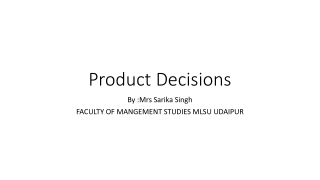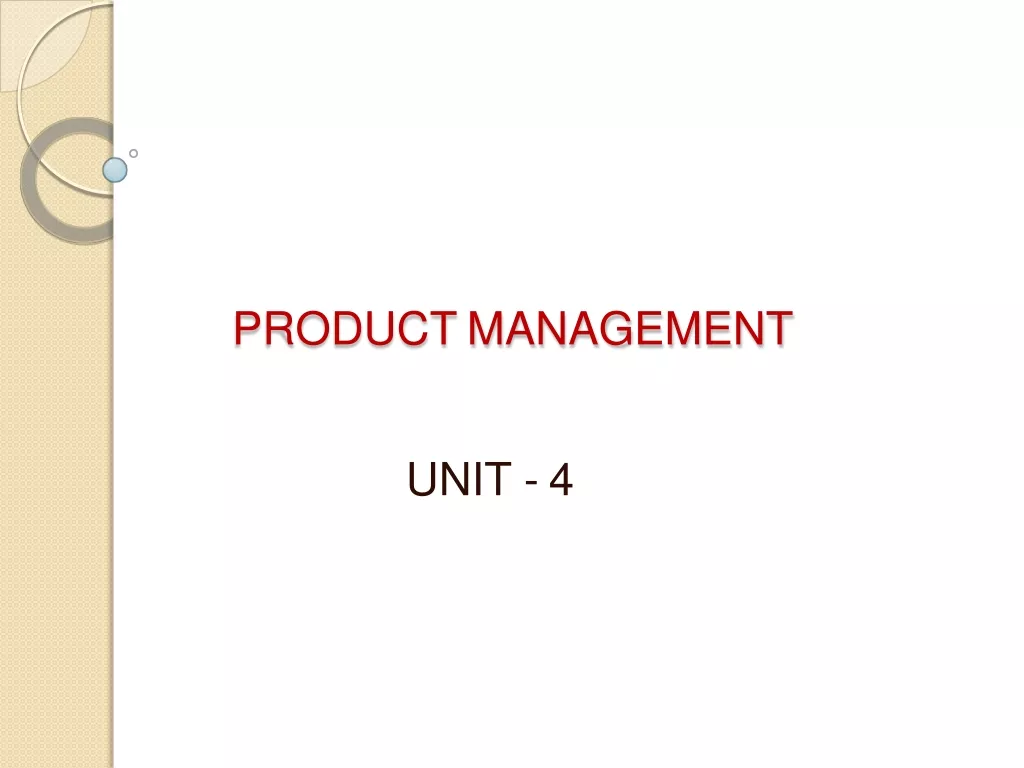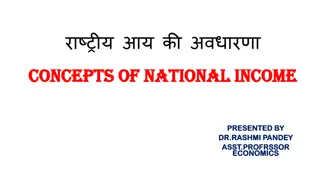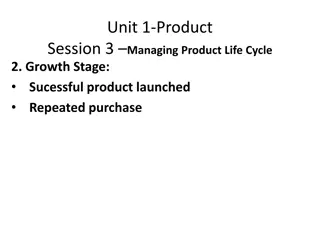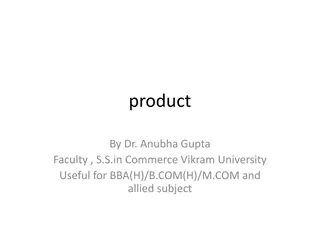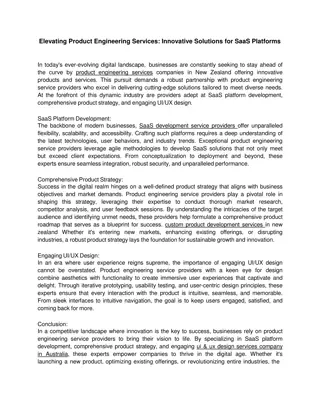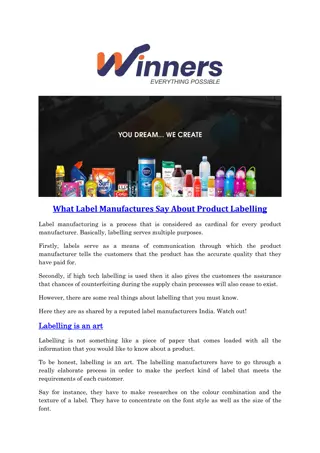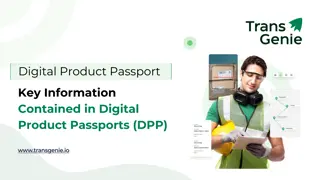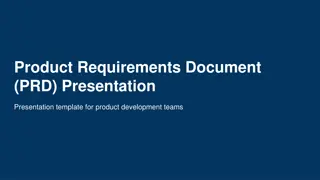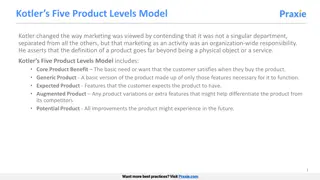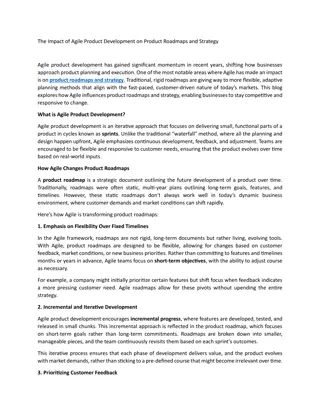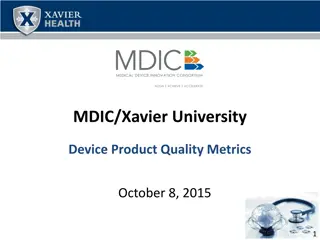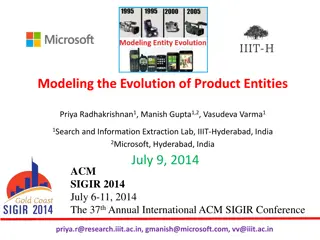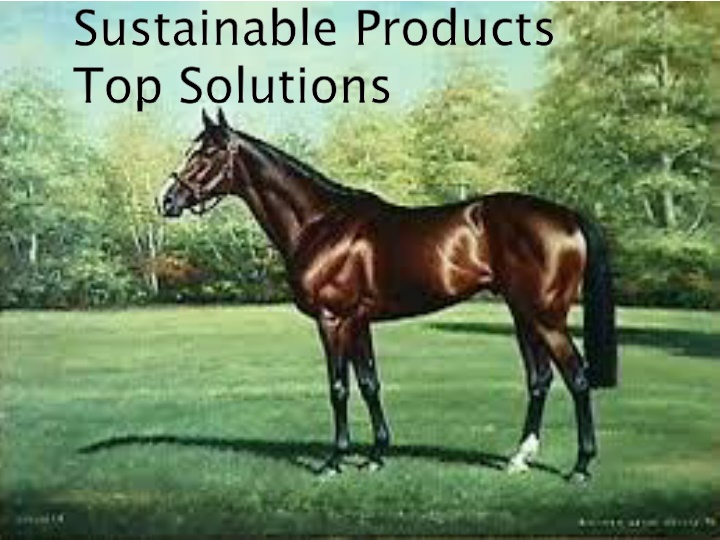
Sustainable Product Innovation Solutions
Explore innovative strategies such as reducing end-of-life impacts, implementing shared processing centers, fostering cooperative knowledge-sharing, developing guidelines for LCA tool use, creating accessible LCA tools, piloting localized manufacturing, and enhancing sustainability accountability across the supply chain to drive sustainable product development and operations.
Download Presentation

Please find below an Image/Link to download the presentation.
The content on the website is provided AS IS for your information and personal use only. It may not be sold, licensed, or shared on other websites without obtaining consent from the author. If you encounter any issues during the download, it is possible that the publisher has removed the file from their server.
You are allowed to download the files provided on this website for personal or commercial use, subject to the condition that they are used lawfully. All files are the property of their respective owners.
The content on the website is provided AS IS for your information and personal use only. It may not be sold, licensed, or shared on other websites without obtaining consent from the author.
E N D
Presentation Transcript
Sustainable Products Top Solutions
A1: Reduce end products A1: Reduce end- -of products of- -life impacts of life impacts of Reduce the end-of-life sustainability impacts of a product, e.g. by including the ability to dismantle & recycle components.
A2: Machining/Processing centers A2: Multi Machining/Processing centers Multi- -Use Flexible/Shared Use Flexible/Shared Implement multi-use, flexible/shared, machining/processing centers that are managed to protect IP and facilitate multi-use sustainable operations
A3: Cooperative Knowledge & Solutions A3: Cooperative Knowledge & Solutions Create widespread sharing of knowledge to seek solutions to sustainability problems (e.g. Reach chemicals for aerospace, IMDS automotive, ROHS)
A4: Guidelines for Consistent LCA Tool Use A4: Guidelines for Consistent LCA Tool Use Develop widespread guidelines, product category rules, and leadership standards for using LCA tools. This will enable consistent, meaningful analysis and serve as a pathway to triple bottom line success.
A5: Accessible LCA tools to enhance sustainability considerations A5: Accessible LCA tools to enhance sustainability considerations Develop easy-to-use black box LCA tools which can be integrated into the product development toolset (especially for smaller companies) to enhance sustainability considerations in new materials, products, and processes.
A6: Explore and Pilot Localized Manufacturing A6: Explore and Pilot Localized Manufacturing Explore the appropriate use of localized manufacturing, implement a pilot project, and analyze the impact on sustainability and society
A7: Expand Sustainability Accountability Across Supply Chain A7: Expand Sustainability Accountability Across Supply Chain Incorporate cross-tier sustainability standards/regulations/accountability among all OEM suppliers
A8: Modeling of unintended consequences A8: Modeling of unintended consequences Explore the use of backbone computing (internet-based) to evaluate the use and discover the far-flung impact of new materials, processes, products, or technologies. (e.g. use of ethanol depletes rainforests)
A9: Training and Certification in Sustainability A9: Training and Certification in Sustainability Design and sponsor a variety of educational offerings in sustainability (degree programs, courses, STEM, technical degree programs, online courses) to provide needed expertise in sustainability. Develop certification programs based on this training which lead to job opportunities for low- skilled/entry-level workers (e.g. potential for end- of-life processing jobs in Detroit; similar to India culinary training programs which interface with hotel chains).
A10: OEM Responsibility For Total Product Life A10: OEM Responsibility For Total Product Life- -Cycle Cycle Define a suitable U.S. approach and implement pilot measures to require OEMs to claim responsibility for the total life-cycle of some products, including reclaiming for remanufacturing or recycling at the end of product use. This would be similar to European practices.

